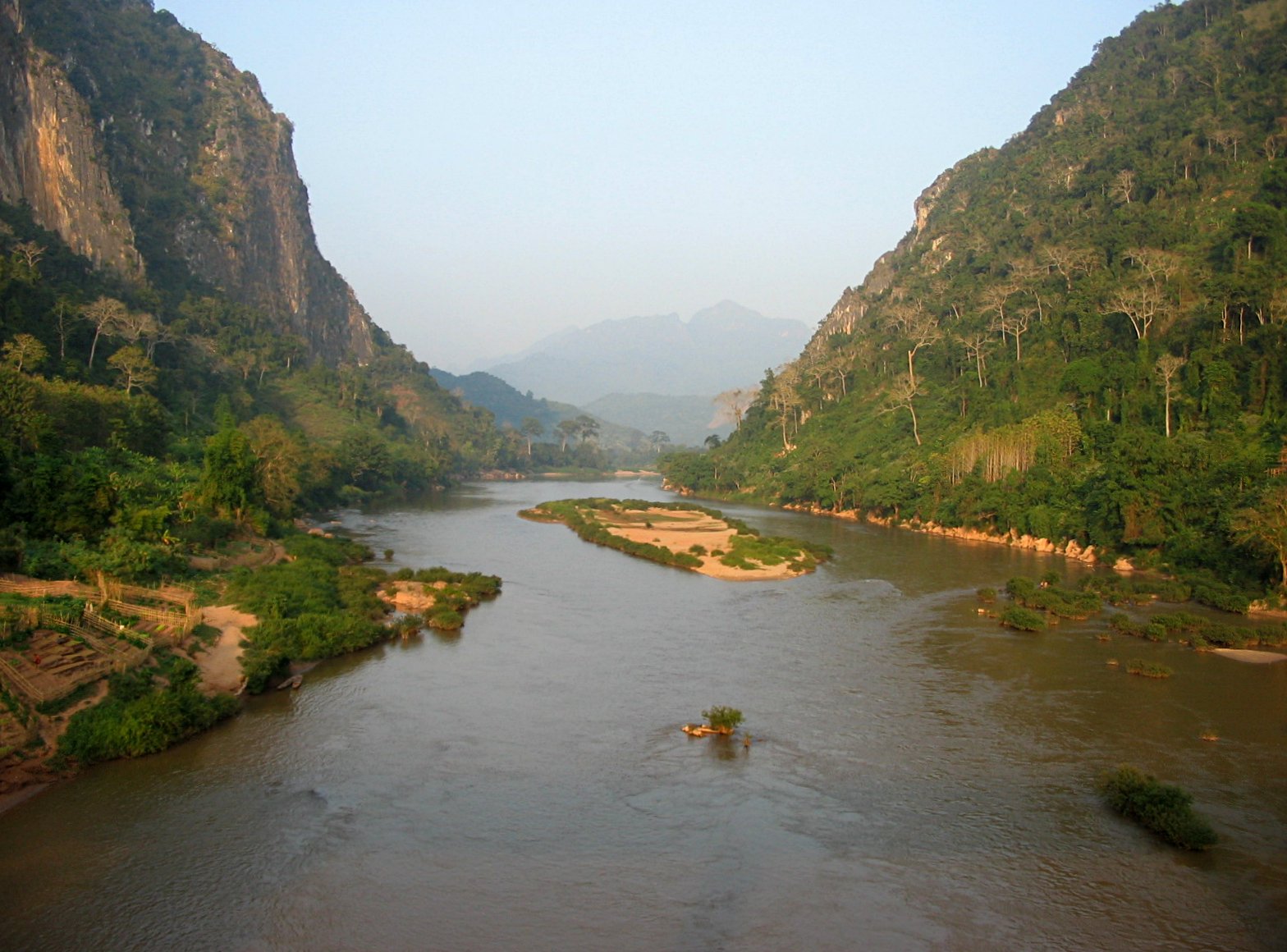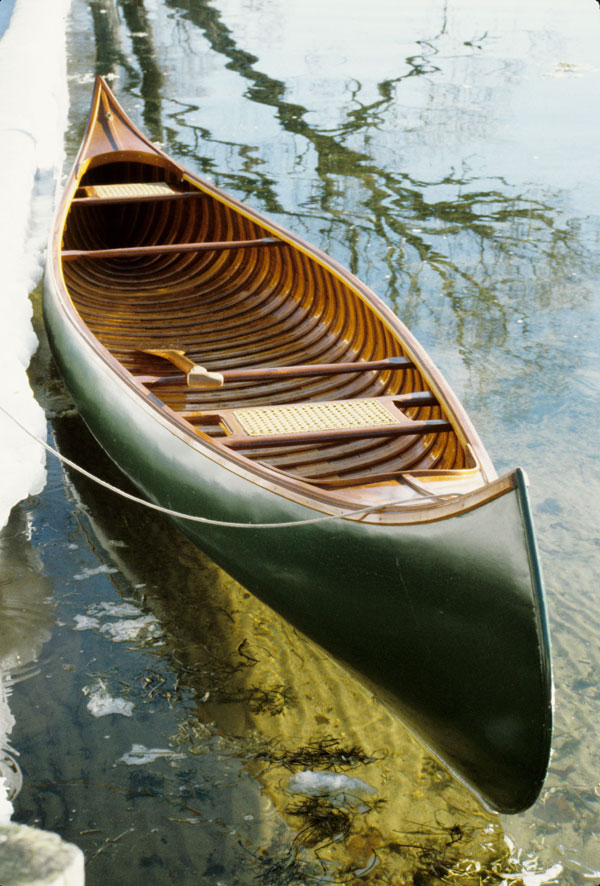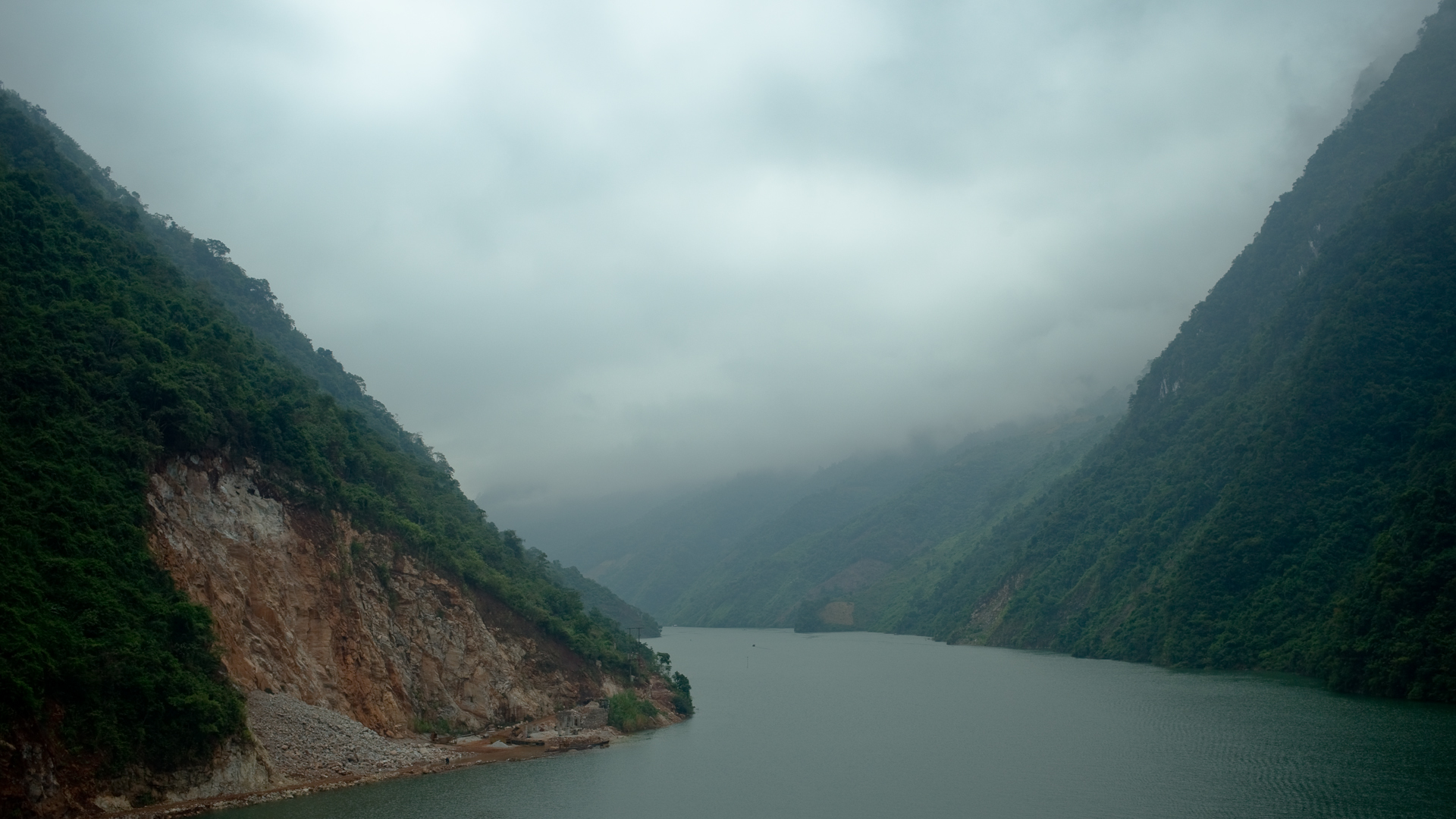|
Battle Of Muong Khoua
The Battle of Muong Khoua took place between April 13 and May 18, 1953, in northern Laos during the First Upper Laos Campaign in the French Indochina War. A garrison of a dozen French and 300 Laotian troops occupied a fortified outpost in the hills above the village of Muong Khoua, across the border from Điện Biên Phủ. Muong Khoua was among the last French outposts in northern Laos following the decision of the French High Command to string several isolated garrisons through the region in order to buy time to fortify the major Laotian cities against Việt Minh attack. Many of these garrisons were given orders by radio to dig in and fight the approaching Việt Minh forces. Following the fall of a satellite strong point at Sop-Nao, the troops at Muong Khoua under Captain Teullier resisted a Việt Minh siege force for thirty-six days while supported by air-dropped supplies and air strikes. The small French force repelled several direct attacks and endured a series of arti ... [...More Info...] [...Related Items...] OR: [Wikipedia] [Google] [Baidu] |
First Indochina War
The First Indochina War (generally known as the Indochina War in France, and as the Anti-French Resistance War in Vietnam) began in French Indochina from 19 December 1946 to 20 July 1954 between France and Việt Minh ( Democratic Republic of Vietnam), and their respective allies. Việt Minh was led by Võ Nguyên Giáp and Hồ Chí Minh. Most of the fighting took place in Tonkin in Northern Vietnam, although the conflict engulfed the entire country and also extended into the neighboring French Indochina protectorates of Laos and Cambodia. At the Potsdam Conference in July 1945, the Combined Chiefs of Staff decided that Indochina south of latitude 16° north was to be included in the Southeast Asia Command under British Admiral Mountbatten. The Japanese forces located south of that line surrendered to him and those to the north surrendered to Generalissimo Chiang Kai-shek. In September 1945, Chinese forces entered Tonkin, and a small British task force landed at ci ... [...More Info...] [...Related Items...] OR: [Wikipedia] [Google] [Baidu] |
Raoul Salan
Raoul Albin Louis Salan (; 10 June 1899 – 3 July 1984) was a French Army general. He served as the fourth French commanding general during the First Indochina War. He was one of four retired generals who organized the 1961 Algiers Putsch operation. He was the founder of the Organisation armée secrète and the most decorated soldier in the French Army at the end of his military career. World War I Salan was born on 10 June 1899 in Roquecourbe, Tarn. Enlisted in the French Army for the duration of the war on 2 August 1917, he was accepted in the École spéciale militaire de Saint-Cyr on 21 August 1917, being assigned to the cadet student platoon of the 16th Infantry Regiment stationed at Montbrison, as part of the ''promotion'' "de Saint-Odile et de La Fayette" (1917-1918). Salan graduated as an ''aspirant'' on 25 July 1918, and was assigned to the 5th Colonial Infantry Regiment (5e RIC) in Lyon on 14 August 1918. As a platoon leader in the 5e RIC's ''11e Compagnie'', h ... [...More Info...] [...Related Items...] OR: [Wikipedia] [Google] [Baidu] |
Nam Ou 1
Nam, Nam, or The Nam are shortened terms for: * Vietnam, which is also spelled ''Viet Nam'' * The Vietnam War Nam, The Nam or NAM may also refer to: Arts and media * Nam, a fictional character in anime series ''Dragon Ball'' * ''NAM'' (video game), a 1998 PC game * '' The 'Nam'', a Vietnam War comic series by Marvel Organizations and movements * NAM Aidsmap, a UK organization and website formerly named the National AIDS Manual and now often simply aidsmap * National Academy of Medicine, of the US National Academies of Sciences * National-Anarchist Movement, a radical, racist, anti-capitalist, anti-Marxist, and anti-statist ideology * National Anti-crisis Management, a shadow government created in Belarus in October 2020 * National Arbitration and Mediation, a US dispute-resolution provider * National Army Museum, a national museum of the British Army in London, England * National Association of Manufacturers, an industrial trade association and advocacy group in the US ... [...More Info...] [...Related Items...] OR: [Wikipedia] [Google] [Baidu] |
Canoe
A canoe is a lightweight narrow water vessel, typically pointed at both ends and open on top, propelled by one or more seated or kneeling paddlers facing the direction of travel and using a single-bladed paddle. In British English, the term ''canoe'' can also refer to a kayak, while canoes are called Canadian or open canoes to distinguish them from kayaks. Canoes were developed by cultures all over the world, including some designed for use with sails or outriggers. Until the mid-19th century, the canoe was an important means of transport for exploration and trade, and in some places is still used as such, sometimes with the addition of an outboard motor. Where the canoe played a key role in history, such as the Northern United States, Canada, and New Zealand, it remains an important theme in popular culture. Canoes are now widely used for competition and pleasure, such as racing, whitewater, touring and camping, freestyle and general recreation. Canoeing has been ... [...More Info...] [...Related Items...] OR: [Wikipedia] [Google] [Baidu] |
Battle Of Nà Sản
The Battle of Nà Sản was fought between French Union forces and the Nationalist forces of the Việt Minh at Nà Sản, Sơn La Province, during the First Indochina War for control of the T’ai region (Northwest territory). Background Military situation Battle of Hòa Bình In the Fall of 1950, General Marcel Carpentier decided to withdraw all military forces from Hòa Bình, capital of the Muong region. In November 1951, General De Lattre, Carpentier's replacement, launched an offensive operation against the Việt Minh in Hòa Bình to reclaim an area he saw as vital for France's future in Indochina. According to De Lattre, capturing Hòa Bình would cut the enemy's supply line between Thanh Hóa and Việt Bắc. Psychologically, reclaiming the province would gain support from the Mường, who had supported neither side, but were leaning more toward the Franco-Vietnamese side. In November 1951, De Lattre mobilized 10 infantry and eight airborne battalions to moun ... [...More Info...] [...Related Items...] OR: [Wikipedia] [Google] [Baidu] |
Thai People In Vietnam
Thai or THAI may refer to: * Of or from Thailand, a country in Southeast Asia ** Thai people, the dominant ethnic group of Thailand ** Thai language, a Tai-Kadai language spoken mainly in and around Thailand *** Thai script *** Thai (Unicode block) People with the name * Thai (surname), a Vietnamese version of Cai, including a list of people with the name * Thai Lee (born 1958), an American businesswoman * Thai Nguyen, US-based Vietnamese fashion designer and television personality Other uses * Thai (cannabis), a name for the drug * Thai Airways, the national airline of Thailand * Thai cat, a breed of cat * Thai, a month in the Tamil calendar * Toe to Heel Air Injection (THAI), a method of extracting oil from oil sands See also * * Dai (other) * Tai (other) * Tay (other) * Thais (other) * Thay (other) * Tie (other) * Siam (other) Siam is the former name of Thailand, and is used to refer to the hist ... [...More Info...] [...Related Items...] OR: [Wikipedia] [Google] [Baidu] |
Phongsali
Phongsali or Phongsaly ( lo, ຜົ້ງສາລີ) is the capital of Phongsaly Province, Laos. It is the northernmost provincial capital in Laos, opposite Attapeu in the south. The town has about 8,000 inhabitants. It lies at approximately 1,430 meters elevation on the slopes of Mount Phu Fa (1,625 meters). Phongsali has summer temperatures around 25-30 °C, with frequent rain. In winter, from November to March, it is cool and mostly sunny, with daytime temperatures between 10-18 °C. In the centre of the town are houses built in Yunnanese style with ornate wooden fronts. This is quite rare as the preserved city was not destroyed like other cities in northern Laos during the Vietnam War by bombing. A 400 year-old tea plantation is about 18 kilometers away in the village of Ban Komaen, which according to some tea experts has some of the oldest tea trees in the world. The large root system of the old trees extends deep into the mineral-rich soil and gives the "Phongsa ... [...More Info...] [...Related Items...] OR: [Wikipedia] [Google] [Baidu] |
Vietnam
Vietnam or Viet Nam ( vi, Việt Nam, ), officially the Socialist Republic of Vietnam,., group="n" is a country in Southeast Asia, at the eastern edge of mainland Southeast Asia, with an area of and population of 96 million, making it the world's sixteenth-most populous country. Vietnam borders China to the north, and Laos and Cambodia to the west. It shares maritime borders with Thailand through the Gulf of Thailand, and the Philippines, Indonesia, and Malaysia through the South China Sea. Its capital is Hanoi and its largest city is Ho Chi Minh City (commonly known as Saigon). Vietnam was inhabited by the Paleolithic age, with states established in the first millennium BC on the Red River Delta in modern-day northern Vietnam. The Han dynasty annexed Northern and Central Vietnam under Chinese rule from 111 BC, until the first dynasty emerged in 939. Successive monarchical dynasties absorbed Chinese influences through Confucianism and Buddhism, and expanded ... [...More Info...] [...Related Items...] OR: [Wikipedia] [Google] [Baidu] |
Black River (Vietnam)
The Black River, (, from the Tai language ''Da'' meaning "dark-brown") also known upstream as the Lixian River in China, is a river located in China and northwestern Vietnam. Course Its source is in Yunnan province of China. From China, the river's course passes through the Vietnamese provinces of Lai Châu (where it forms part of the border with Điện Biên province), Sơn La and Hòa Bình. The Black River is the most important tributary of the Red River, which it joins in Tam Nông district near Việt Trì in Phú Thọ province. It also forms part of the border between Phú Thọ province and Hanoi (previously the border with Hà Tây province). The river's total length is 910 km, with approximately 427 km in China and 527 km in Vietnam. Hydroelectric power The Black River yields substantial hydroelectric power. In China, seven dams are planned of which six, the Yayangshan Dam, Shimenkan Dam, Longma Dam, Jufudu Dam, Gelantan Dam, and Tukahe D ... [...More Info...] [...Related Items...] OR: [Wikipedia] [Google] [Baidu] |
Nam Ou
The Nam Ou (Lao language, Laotian: ນ້ຳອູ , Literal translation, literally: "rice bowl river") is one of the most important rivers of Laos. It runs 448 km from Phongsaly Province to Luang Prabang Province. The river rises in Muang Ou Nua near the Lao-Chinese border, and traverses the northern Laos mountains and gorges until meeting the Mekong River in Ban Pak Ou. Along with the Mekong, the Nam Ou is the only natural channel suitable for large-draft ship transport, boat transportation. The Nam Ou is one of the 12 principal tributaries of the Mekong River. The river has a total area of nearly 26,000 km2. Near its confluence with the Mekong are the Pak Ou Caves, famous for their Buddharupa, Buddha statues. The river is also surrounded by limestone karts, forests, and valleys. The river supports Lao rice cultivation. The Nam Ou placed in the top 80th percentile for river health according to the Mekong River Commission's aquatic health index. Ecology The Nam Ou ... [...More Info...] [...Related Items...] OR: [Wikipedia] [Google] [Baidu] |
Sisavang Vong
King Sisavangvong ( lo, ພຣະບາທສົມເດັຈພຣະເຈົ້າມະຫາຊີວິຕສີສວ່າງວົງສ໌, 14 July 1885 – 29 October 1959) Born Prince Khao , was one of the last kings of Luang Prabang ruling from 28th of April 1904 until his death on the 29th of October 1959. According to Lao customs, while being crowned khao would be given a Courtesy name Sisavangvong and be addressed by his courtesy name until his death. Early life Prince Khao was born in the Golden Palace (during his father's reign) on 14th July, 1885, as the eldest surviving son of His Majesty King Zakarinth and second wife Her majesty Queen consort Thong-sy. However, in boyhood Khao was sent to study at Lycée Chasseloup-Laubat, Saigon and l'École Coloniale, where he would return to ascend the throne. Ascension Prince Khao was named heir apparent on 15th of April 1904, upon his father's death on the 26th of March 1904, Khao was to ascend the throne at th ... [...More Info...] [...Related Items...] OR: [Wikipedia] [Google] [Baidu] |

.jpg)




